

Sound Analysis of the Great Highland Bagpipe
The sound you produce from your bagpipe can be analysed using the state-of-the-art Overtone Analyser.
How the sound of the Great Highland Bagpipe is analysed
When you shine white light through a prism, it splits into seven (7) colours as below:

The same happens when you put the sound of the bass drone through an audio analyser, it splits into overtones (harmonics). Example below:

The bass drone overtones (harmonics) follow the Natural Harmonic Progression as in the above example
The human voice overtones also follows this Natural Harmonic Progression as in the example, below:
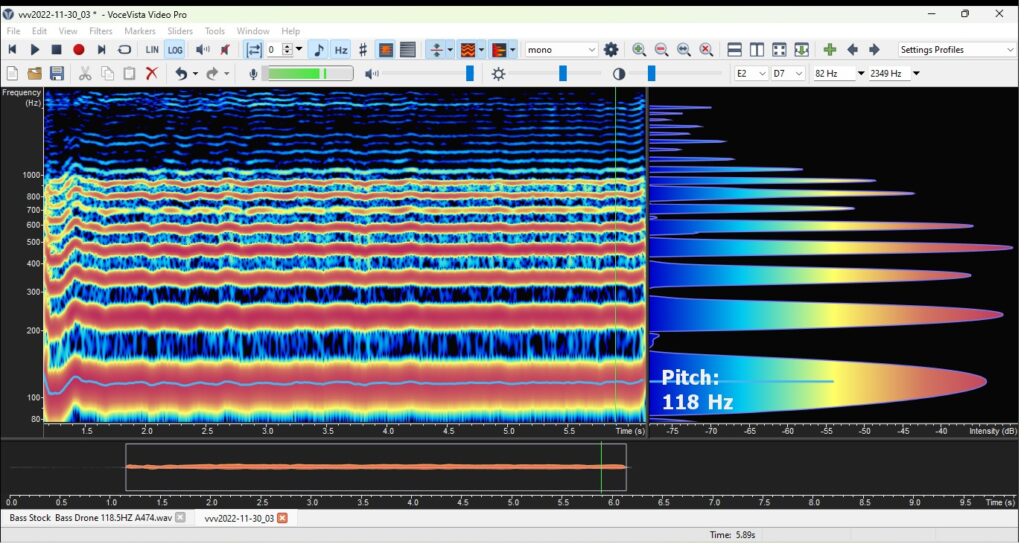
The harmonics of the human voice are the same for bass drone of the Great Highland Bagpipe
Human Male Voice Harmonics
GHB Bass Drone Harmonics
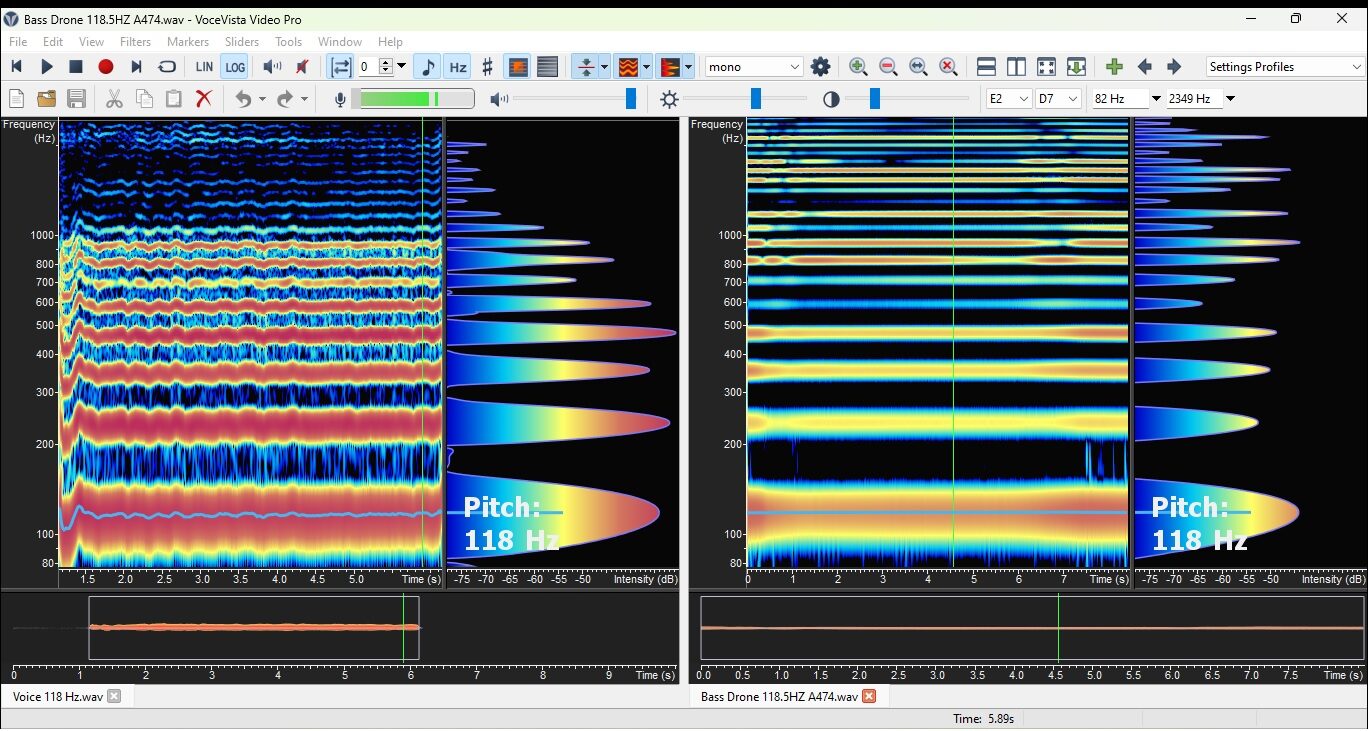
The samples below show the sound quality of unstable and stable drones
Unstable drones:

Stable drones – shown with Highland Reeds’ HR3 drone reeds:
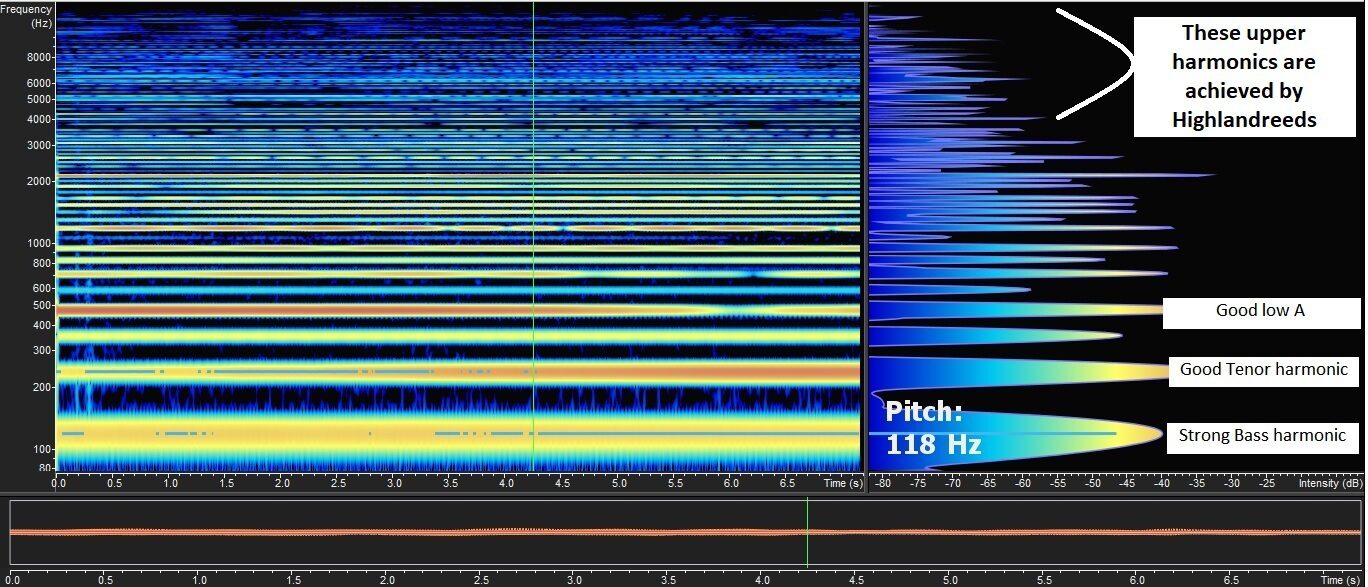
If you compare the images, the stable drones have solid harmonics (lines) whereas the unstable drones have weak and poor harmonics shown by the fragmented lines.
Drones with chanter scale
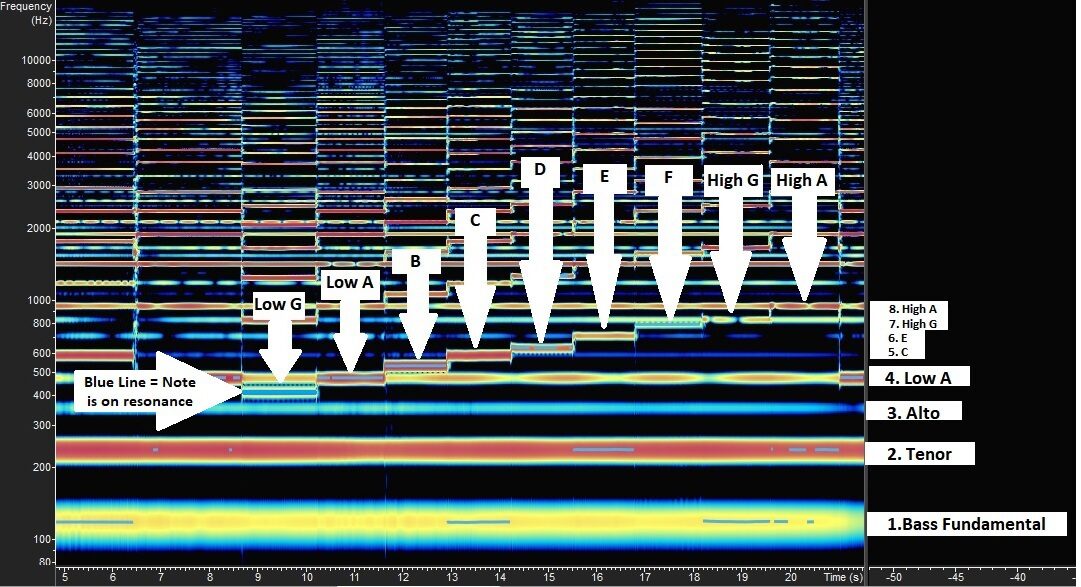
The report you receive from our analysis
Item 1 – Image of your recording with basic comments:
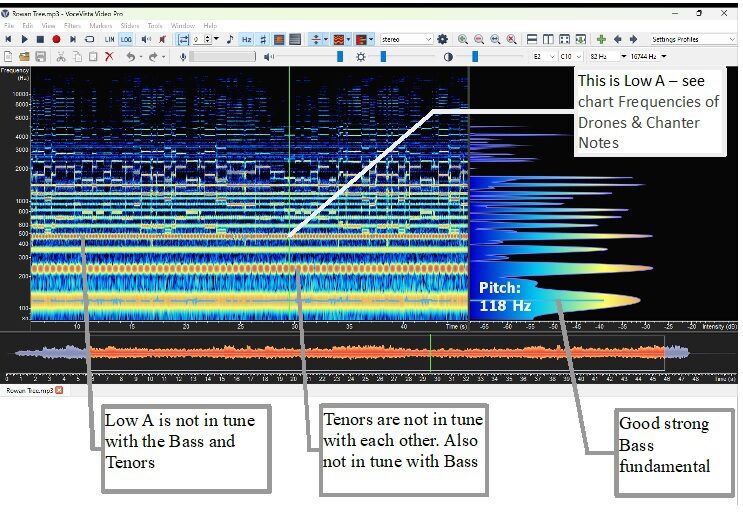
Item 2 – Also the chart frequencies of the drone and chanter notes:
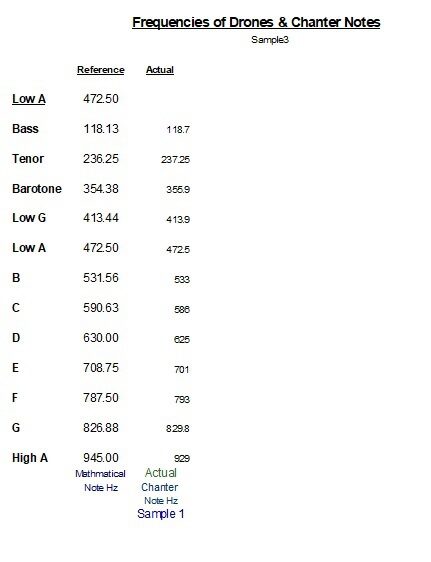
How to get your analysis
1. Send an email with the following:
- Your Name
- Phone Number
- Email Address
- “GHB Analysis” in the Subject field
- Sound recording (MP3, MP4, WAV – if unsure send it through and we will check the format)
Your recording should be of you playing a slow tune that has the full pipe scale – including low G – as in, for example, Killiecrankie.
2. Email the file to 4analysis@proton.me
3. We will confirm receipt of your email and will Invoice you with payment instructions within seven (7) days. We only accept payment through Wise – see https://wise.com/
4. Once we have received payment the analysis will be emailed to you.